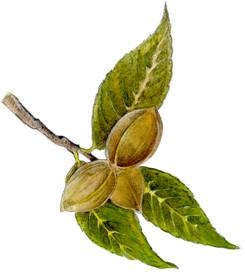
Introduction
Mouse ear of pecan is a growth abnormality resulting from a deficiency of nickel in the pecan tree. First reported in 1918, mouse ear was initially attributed to spring cold injury before bud break, and was later thought to be the result of a viral pathogen. At various times, the problem has also been considered a manganese deficiency or a copper deficiency. Only recently, the discovery was made that mouse ear indicates a severe nickel deficiency.
The disorder occurs most frequently on newly transplanted trees in established orchards, but can also occur on sites where pecan has not previously been grown.
Symptoms
Mouse ear first appears on the spring flush of growth. The most common symptom of mouse ear is a rounded or blunt leaflet tip. Affected leaves and leaflets are often smaller in size than healthy foliage. The rounded leaflet tips result from the buildup of urea to the point of toxicity in the leaf tissue. Nickel is required by the urease enzyme in plants for the efficient conversion of urea to ammonia. As a result, when nickel is at an insufficient level in the plant, urea is not converted as efficiently, and toxicity may develop.
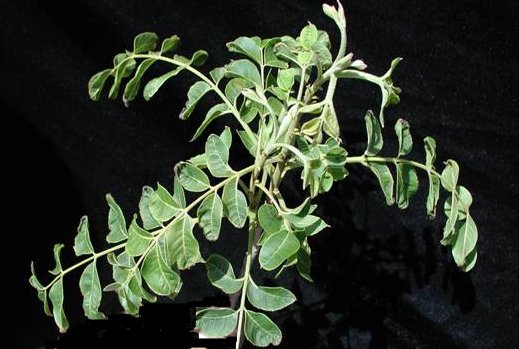 Figure 1. Pecan leaves exhibiting typical rounded, blunt leaflet tips.
Figure 1. Pecan leaves exhibiting typical rounded, blunt leaflet tips.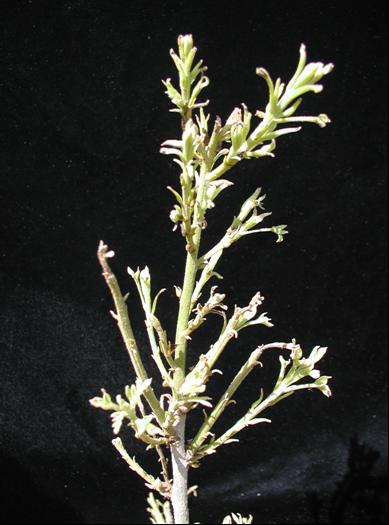 Figure 2. Rosetting of pecan.
Figure 2. Rosetting of pecan.Other symptoms of mouse ear include dwarfing of tree organs, poorly developed root systems, rosetting, delayed bud break, loss of apical dominance, necrosis of leaflet tips, and reduced energy storage by the tree. Symptoms may occur throughout the entire tree, or sporadically throughout the canopy, often evident only on a single major limb or terminal shoot. Mouse ear may consistently reappear from year to year, or may appear only occasionally, on the same trees. The degree of mouse ear severity within the tree canopy typically increases with canopy height.
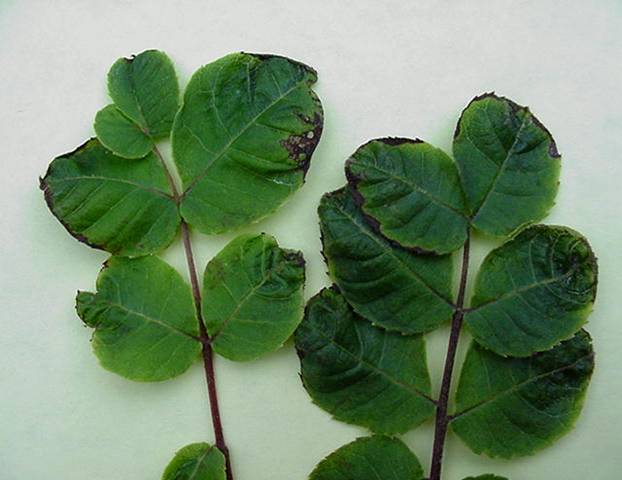 Figure 3. Necrosis of pecan leaflet tips.
Figure 3. Necrosis of pecan leaflet tips.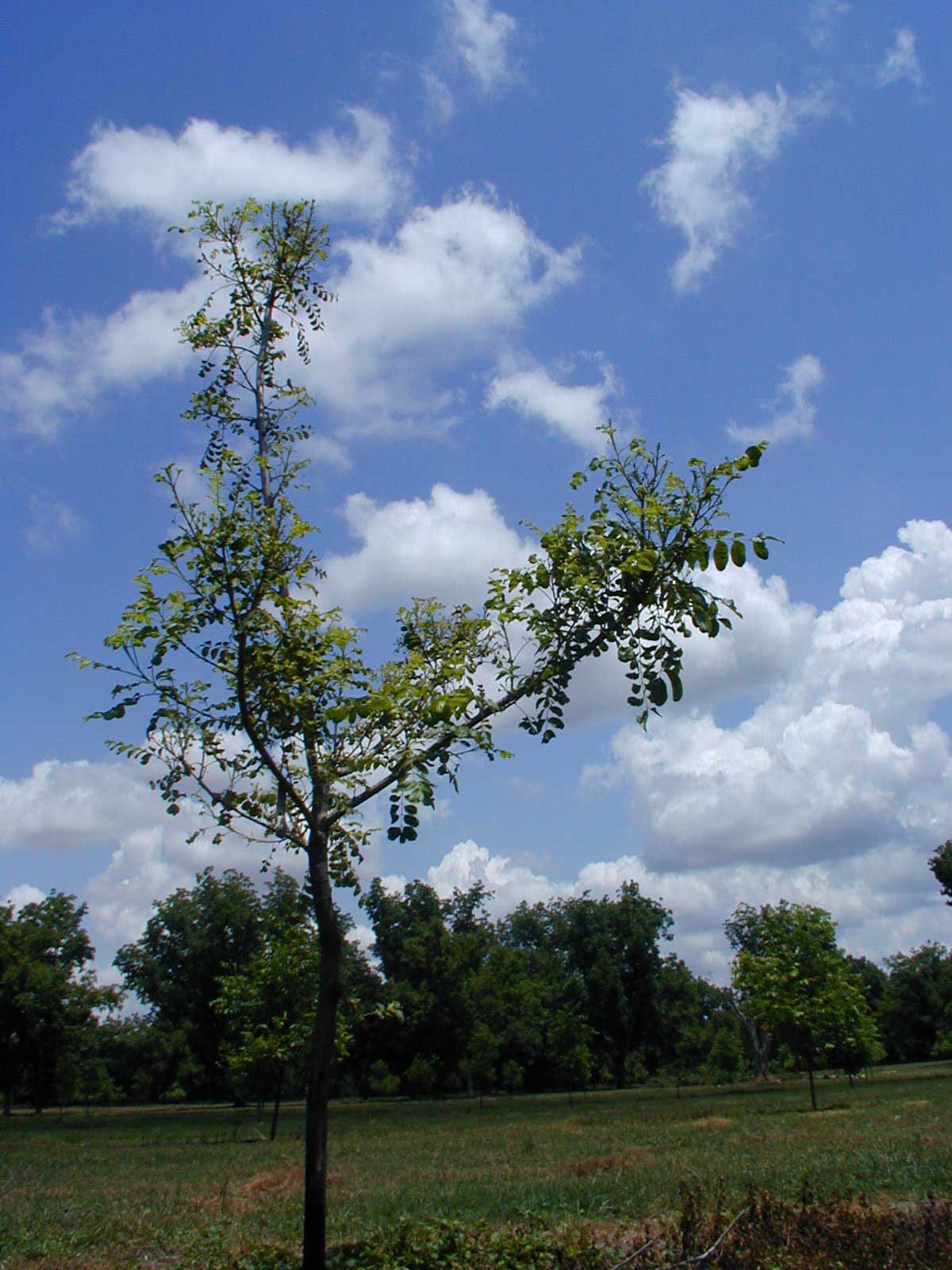 Figure 4 . Pecan tree suffering from nickel deficiency and mouse ear symptoms.
Figure 4 . Pecan tree suffering from nickel deficiency and mouse ear symptoms.
A variety of abiotic and biotic factors may influence mouse ear. Severely affected orchards typically have high soil levels of zinc, calcium, magnesium, and phosphorous, but are low in copper and nickel. These orchard soils are also normally acidic and sandy in texture, with low cation exchange capacities. Nematodes are commonly associated with the roots of affected trees as well.
Prevention
Mouse ear is easily corrected by the application of nickel as a foliar spray in mid-late April when the developing foliage is in the parachute stage. Severely affected trees may need another application 30 days after the initial spray and again in late September or early October to prevent mouse ear in the following spring flush. The fall application will ensure that nickel will be stored in the buds and stem tissues over the winter, where it will be available to the tree at bud break. When using foliar nickel sprays, be sure to follow all label directions.
Cultural Recommendations
In order to manage orchards for the prevention of mouse ear, the following steps should be taken:
- Monitor leaf tissue and soil samples regularly for the availability of nickel to pecan trees. At the present time, no set leaf sufficiency levels have been made for nickel, however research indicates that trees with nickel levels below 3 ppm often suffer from mouse ear symptoms. Growers should not allow nickel levels to rise above 15 ppm in pecan leaves.
- Do not make excessive applications of zinc in orchards prone to mouse ear. Zinc competes with and inhibits the uptake of nickel by pecan roots from orchard soils. Foliar zinc should only be applied when zinc levels in the leaf are less than 50 ppm or when visual symptoms of zinc deficiency are present in the orchard. Repeated foliar applications of zinc to the orchard result in substantial accumulation of zinc in the soil, mainly concentrated around the base of trees due to the rinsing of foliar applied zinc down the scaffold limbs and trunk. Therefore, soil zinc levels should not be allowed to increase in sandy or acidic soils already low in nickel.
- Maintain adequate soil moisture at bud break. Since nickel is at relatively low levels in most orchard soils, and its absorption by the tree is among the lowest of many nutrients, it is important to maintain soil moisture in order to facilitate uptake.
- Maintain soil pH at 6.5 for efficient uptake of available soil nickel.
- Mouse ear prone sites should not receive excessive or late applications of nitrogen, in order to ensure that senescing foliage can translocate nickel to bud and shoot storage pools prior to defoliation.
- Avoid excessive applications of calcium and magnesium to mouse ear prone sites. Most of the calcium and magnesium applied to orchard soils is applied in the form of dolomitic lime, therefore care should be taken not to over-lime orchard soils.
- Carefully manage phosphorous, iron, and copper levels in orchard soils, especially on sandy or acidic sites.These nutrients affect the uptake of nickel by pecan roots. Additionally, they may alter the availability of nickel within the pecan leaf.
References
Wood, B. W., Reilly, C. C., & Nyczepir, A. P. (2004). Mouse ear of pecan: I. Symptomatology and occurrence. Hortscience, 39, 87–94. https://doi.org/10.21273/HORTSCI.39.1.87
Wood, B. W., Reilly, C. C., & Nyczepir, A. P. (2004). Mouse ear of pecan: II. Influence of nutrient applications. Hortscience, 39, 95–100. https://doi.org/10.21273/HORTSCI.39.1.95
Wood, B. W., Reilly, C. C., & Nyczepir, A. P. (2004). Mouse ear of pecan: A nickel deficiency. Hortscience, 39, 1238–1242. https://doi.org/10.21273/HORTSCI.39.6.1238
Status and Revision History
Published on Aug 15, 2005
Published on Feb 10, 2009
Published on May 05, 2009
Published with Full Review on May 02, 2012
Published with Full Review on Mar 28, 2017
Published with Full Review on Oct 11, 2024


























































